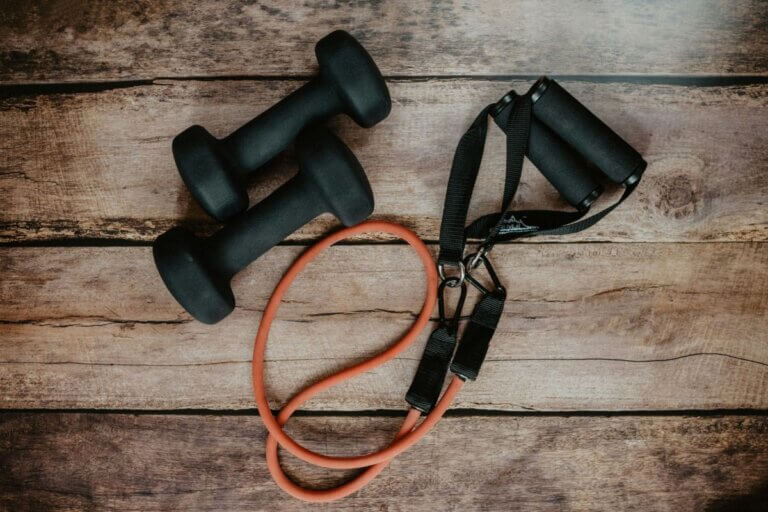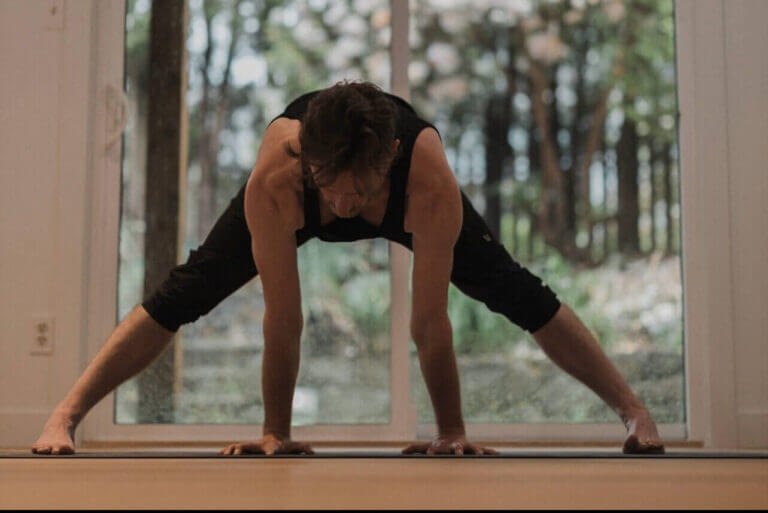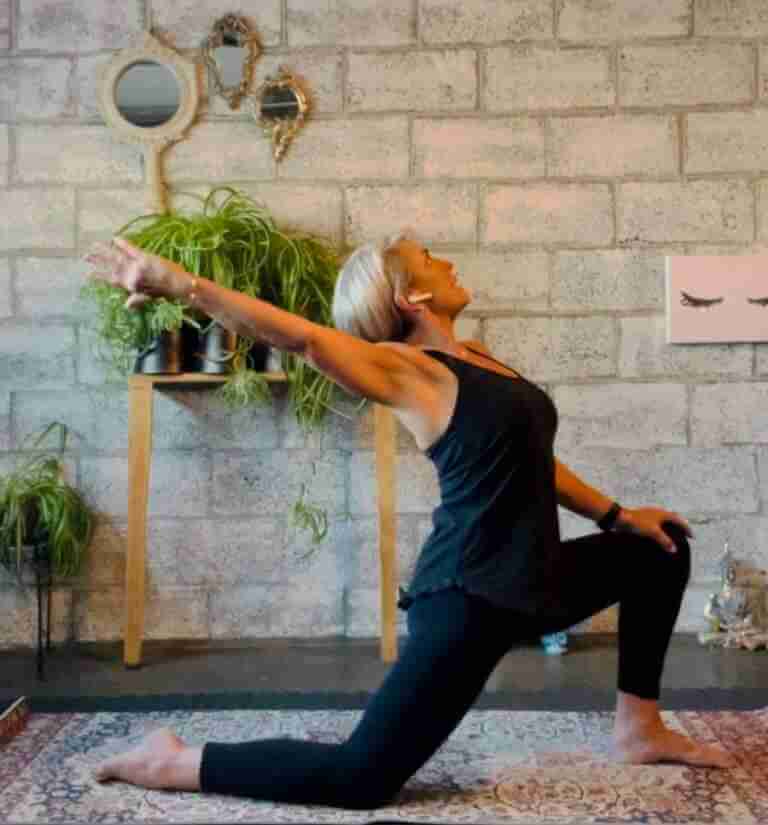
Yoga for Everybody: Everyone’s Guide to Getting Started
I used to think that yoga was only done by young people with lean, muscular body types. However, that couldn’t be further from the truth.
Asana at Home Online Yoga
Asana at Home Online Yoga
We all know that exercise is important to living a healthy life, but finding the time and money to go to the gym can be a huge burden. With an uptick in remote jobs, many workers are interested in building a home gym so they can get a quick workout during lunch or between calls. For those in a home, whether it be renting in downtown Seattle or owning in the suburbs of Edmonds, it’s possible to devote an entire room to being a gym.
However, folks in apartments don’t have that luxury. With few places to store equipment, building a home gym in an apartment proves to be a challenge. ApartmentGuide reached out to experts in the fitness industry to address this issue and provide you with seven tips on how to build a functional home gym.

When starting the journey towards building a home gym, get specific about what you want out of this new experience. Lei Fei of Crossfit RTP has some specific questions for you to think about. “Consider what fitness level you’re looking to achieve,” he says. “What types of exercises would be most appropriate for you to get started? Would it be predominantly weight and resistance training? Or cardio machines like a stationary bike, treadmill, etc? Or a mix of both?”
Make sure to take inventory of the gear you have, too: “When building a home gym or maintaining a workout routine in a small space, start by evaluating the equipment you already own. Supplement with space-efficient items like resistance bands or a TRX system if necessary,” says Sergio Pedemonte, CEO of Your House Fitness. “For in-home gyms in apartments, essentials include dumbbells, kettlebells, resistance bands, and cushioned padding to reduce noise.”
Above all, the recommendation from fitness professionals is to focus on versatile, compact, and storable equipment. “The items I would recommend would be a BOSU, adjustable dumbbells, bands (various types), and a mat. With any combination of the aforementioned equipment, you can create a multitude of workout routines. With all fitness routines, consistency is key,” shares Erik Hroncich of Edge Personal Training.
Elisabeth Scott, Founder and Head Coach of Running Explained seconds this idea, “You can get an incredible variety of workouts in using adjustable dumbbells, resistance bands, and a collapsible or foldable weight bench, all of which can be easily tucked into a closet or under a bed when not in use; every strength-focused workout I write for my athletes can be done with those three pieces of equipment!”
When selecting the dumbbells for your apartment, lean towards lightweight if you can’t get adjustable dumbbells. “Lightweight training increases cardiovascular involvement and can be used in numerous movements and lifts,” says John Fetner of American Runner Blog. “Heavy weights increase injury risk. Shoulder pullets are also great at improving strength and mobility. The shoulder self-lubricates with movement.”
Overall, space is the most important aspect to consider when building a home gym in your apartment. Not many folks appreciate having a bench press in their living room or a squat rack in the kitchen. The key to a quality workout routine in your apartment is using space-efficient equipment. This doesn’t just look like traditional gym equipment, too. “Leveraging architectural features of an apartment, such as stairs for sprints and calf exercises or sturdy chairs for step-ups and tricep dips, can significantly enhance a workout routine without the need for extensive gear,” advises Jason of Crossfit Rife.
A great versatile piece of equipment are the kettlebells. “For exercising with limited space, all you really need are a few kettlebells,” says Don LaTorre of Layman’s Fitness. “They are the Swiss Army knife of home gym training: functional, portable, and versatile. With them, you can do resistance training in your living room, bedroom, patio, or at a park. And when you’re done, you can store them right under your bed”
Alone or combined with other pieces of equipment, kettlebells can be used for a variety of workouts. “Strength tools like exercise bands, a medicine ball, and 1-2 kettlebells can provide the necessary equipment for HIIT workouts, circuit-style training, strength workouts, and core training,” shares Jason Fitzgerald of Strength Running. “And that small investment can help you improve your body composition, strength, and injury resilience.”
Make sure to invest in a yoga mat to protect your floor – no one wants to have a damaged floor because of an uncontrolled kettlebell! If storage is a major concern when it comes to purchasing a yoga mat, the Yune Yoga foldable travel mat is perfect for you. “The Yune Yoga foldable travel mat is perfect for conserving space in a small apartment or home as it folds up to the size of a towel,” shares Nicholas Hyde of Yune Yoga.

Although getting a bunch of equipment sounds exciting and motivational, there’s a large cost barrier for many folks looking to get a workout in. Lots of workout equipment isn’t cheap. If you can’t afford a gym membership or new equipment, that’s okay! There are still plenty of workouts that are focused only on using your body weight. DC Lucchesi of Run Charlotte says, “Push-ups, crunches, planks, lunges, and squats can provide you with a near-total-body workout without even leaving your apartment! An easy internet search will yield lots of variations and modifications to keep it fresh and fun, and ensure you’re using proper form.”
Lei Fei of Crossfit RTP agrees, “Leave yourself some open floor space! Many useful exercises can be performed with your own body weight. Having a clear space to perform these will help you stay safe and clutter-free. You can also utilize the surrounding areas around your building. Is there a nearby walking path that can be used instead of that bulky treadmill?”
Lei Fei touched on it above, but it’s worth repeating. Cardio is essential to a good workout routine, but there’s no need to get a bulky treadmill into your apartment if you have access to a safe running path.
“For cardio, running is one of the best exercises you can do (although I may be biased) and requires minimal equipment when you run outside; avoid the common mistake of running as hard as you can all the time and slow down so you can have a full conversation on most of your runs, even if that means taking walk breaks,” shares Elisabeth Scott, Founder and Head Coach of Running Explained. “And if you live somewhere with a ton of stairs, lucky you! A few repetitions of going hard up those stairs and walking slowly back down for recovery is a whole-body exercise that targets your cardiorespiratory system, builds strength and power in your lower legs, improves core strength, and helps with agility and coordination as well!”
Jason Tebedo, Owner of CrossFit Angier seconds this idea. “Incorporating elements of your apartment building, like stairs for cardio, and outdoor spaces for exercises like lunges and sprints, can greatly enhance your routine without the need for a lot of gear,” he says.
Additionally, running is a great way to connect with people in the community. “Ready to take it off campus and meet some new friends, too?” asks DC Lucchesi of Run Charlotte. “Check your local specialty running shops or a brewery near you. Most of them host weekly run groups or run clubs.”
Usually weights and treadmills are the first things to come to mind when you think of a home gym, but the unsung heroes of building a home gym are resistance bands and the TRX.
“In 99% of scenarios, we would recommend purchasing a set of exercise bands of varying tensions and a set of handles or carabiners to add more variety of grip holds,” says Eastlake Performance. “Another versatile tool you can use is a suspension strap system like the TRX, which conveniently can be placed on top of a door and will use your own body weight to create varying resistances based on your body angle to the anchor point.”
Though a TRX system may look just like a couple of straps, it is a fantastic way to work on strengthening your posterior chain. “The posterior chain is commonly already a weak point for many people who sit throughout the day,” explains Netto Cancilla, Fitness Director at Seattle In-Home Fitness. “A pull-up bar and a TRX attachment are two things I find well worth investing in and learning to use if you plan to get in shape from home. Most everything else can be covered with things around the house and bodyweight movements!”

Yoga is one of the most effective full-body workouts that combines strength, cardio, and flexibility. What makes this form of exercise even better is that it only requires a mat and some optional equipment. Michelle Marchildon is the Yogi Muse with years of experience teaching yoga and mobility, so she’s the ideal guide for giving you an overview to get you started on your yoga journey.
“First, invest in a mat. This serves to identify your time spent focused on fitness, and your space. When you roll it out, you signify it is wellness time and you can’t be distracted or disturbed
Next, purchase weights. Resistance training is critical to maintaining muscle mass and overall health. One set of medium weights will get you started. You can hold both in one hand when you want to progress.
Lastly, an enduring benefit of the pandemic is content available on the internet. Find a program you enjoy and make it a habit to stream routines.
If you have the space to set up a mat, weights and a monitor in a permanent location then it will serve as a daily reminder that health and wellness is important, and that you are worth your time.”
Kevin Parenteau, Founder and CEO of Asana at Home Online Yoga Inc, also has some great in-depth advice when it comes to setting up a home yoga studio. If you’re looking for more specifics on the gear to purchase, check below.
There are two practical considerations when identifying the location of your home yoga studio space.
Yoga gear: A minimalist mindset toward gear is key when space is at a premium. So when adding yoga gear, less is more.
Essential gear:
The nice-to-have gear:
Storage: Storage for all your yoga gear is critical to keeping the home less cluttered and the gear easier to find. Having yoga storage close to the practice area will also make access and cleanup easier.
Decor: Some yogis like to give their practice space a “yogic vibe.” If space permits, Consider adding candles, singing bowls, practice diagrams, pictures, statues, or whatever your yoga heart desires.
Practice: When setting up your home studio, consider how you practice. If you like practicing with music, you’ll need a stereo or portable speaker. If you practice online yoga, where you place a TV, tablet, or computer screen is essential.
In all the talk about equipment and workout plans, it’s easy to forget about recovery. However, proper recovery is essential to building muscle and improving your fitness. While you’re recovering your body is actually taking that time to repair small muscle tears and build stronger muscles. “Recovering from your workout is just as important as the workout itself. Set up your bedroom so it’s cooler, darker, and designed for sleeping only. If you can, avoid using your bed for a desk or other work-related activity,” shares DC Lucchesi of Run Charlotte.
Whether you’re living in a studio apartment in San Diego or renting in Dallas, building a home gym can be a rewarding experience. Proper exercise is an important part of living a full and healthy life, but it’s also important to optimize your space for living. Don’t let your space turn into a gym; let it transform and then revert to being a place to rest.

I used to think that yoga was only done by young people with lean, muscular body types. However, that couldn’t be further from the truth.

Nestled in the heart of the desert, Joshua Tree and its mystical landscape stand as a beacon for those seeking wellness and spiritual rejuvenation. Renowned

New students to the practice may find the names of Sanskrit Yoga poses odd or unusual. These new students may not understand that Yoga transcends
